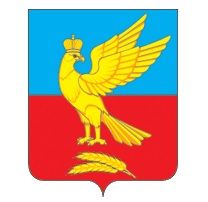Bogolyubovo

The Bogolyubovo urban settlement in the Suzdal district of the Vladimir region is the administrative center of the Bogolyubovo rural settlement with a population of 4,494 (according to the 2010 census). It is located at the mouth of the river Nerl (at the confluence of the Nerl in Klyazma), 2 km northeast of Vladimir, on the M-7 Volga highway. Bogolyubovo is an important center of the tourist route "Golden Ring of Russia".
History
Bogolyubovo was founded in 1158 as the residence of Vladimir Prince Andrey Bogolyubsky (ruled in 1157-1174) – Bogolyubov-city. It was a princely fortress with a large luxurious palace, located in a strategically important place near Vladimir. Later, in 1165, near the Bogolyubov-city, the masters of Andrey Bogolyubsky built the famous Church of the Intercession on the Nerl, considered one of the pearls of Russian white-stone architecture. Here, in Bogolyubov-city, in his own palace Prince Andrey Bogolyubsky was killed by conspirators. Up to now, the ladder tower has been preserved, a witness to the tragic death of the prince on the night of 29 to 30 June 1174.
After the death of Andrey Bogolyubsky, the Holy Bogolyubsky Monastery appeared on the site of his palace. Very little survived from the palace ensemble. It was plundered during internecine wars by Ryazan prince Gleb and destroyed during the Mongol invasion in 1238. In the first half of the 18th century, the Nativity Cathedral was completely rebuilt. The gate bell tower and the huge central temple were built in the monastery in the beginning and middle of the 19th century.
After the destruction of the Bogolyubov-town, probably, there continued to exist a small settlement near the monastery, from which the village of Bogolyubovo grew. It is mentioned in the sources from 1496. Since the 17th century, the village is recorded for the Holy Bogolyubsky Monastery. The organizing center of the village was the church of Joachim and Anna. During the Time of Troubles, the village of Bogolyubovo together with the monastery was devastated by Polish-Lithuanian troops.
In the first half of the 19th century, with the money of the villagers a new church was built with the throne of the Nativity of Christ on the lower tier and Joachim and Anna on the upper one. The temple is made in the style of classicism.
The modern appearance of the village of Bogolyubovo was formed in the 19th century, when there were built most of the buildings, in particular, a stone two-story building of Zemstvo school (1864). At the end of 19th century, there were two icon-painting workshops in Bogolyubovo. One of them belonged to the dynasty of icon painters Shorokhovs.
Since 1929, the village of Bogolyubovo was part of the Vladimir district of the Vladimir sheading of the Ivanovo Industrial Region with its center in Vladimir. Since 1936 – part of the Vladimirsky district of the Ivanovo region, and since August 1944 – part of the Vladimir district of the Vladimir region. In August 1945, the center of the Vladimirsky district was moved from Vladimir to the working village of Bogolyubovo. In 1960 Bogolyubovo received the status of an urban settlement. In January 1965, the Vladimirsky district was renamed the Suzdal district, and Bogolyubovo became part of the Suzdal district of the Vladimir region.
In the 1960s, the cultural and organizing center of the village became the House of Culture, rebuilt from the temple of Joachim and Anna, closed in 1939. There worked numerous mugs and sports sections, the People's theater, a cinema, a library and a billiard room. Since 1997, the church has been returned to the faithful.
At the end of May 2016 the first in Russia model library of the 21st century was opened in Bogolyubovo. It became a platform for the pilot project of the Ministry of Culture of the Russian Federation to introduce the Model Standard for public libraries. The library has significantly expanded its capabilities for people: there are comfortable places for individual and group work, a conference hall and a classroom equipped with modern technology, areas for lecturing, various activities, classes with children, recreation and communication.
Economy
On the basis of the former brick factory, the company LLC "Bergus" was opened in 2016 in Bogolyubovo, which started to produce premium-class diapers. In the future it is expected to expand the range of medical products (medical gloves, latex tips for ultrasound, etc.). The plant "Bergus" will create up to 200 jobs in the urban settlement of Bogolyubovo.
Famous people
E.I. Bykova (1913-1989), was born in Bogolyubovo – the USSR champion in chess among women (1947-1948, 1950) and the third in the history of chess world champion (1953-1956, 1958-1962). She was conducting the "Chess School" program on the Central Television of the USSR. Until recently, chess tournaments were held in memory of E.I. Bykova in Vladimir.
Bogolyubovo as a tourist center
Currently, the Bogolyubovo urban settlement is an obligatory stage of the tourist route "Golden Ring of Russia". The most important sights of Bogolyubovo: ensemble of the Holy Bogolyubsky female monastery with monuments of the 12th century – the ladder tower and the gallery where Andrey Bogolyubsky perished; the church of the Intercession on the Nerl of the 12th century, standing on a hill among the protected Bogolyubsky meadow; remnants of serf earthen ramparts and moats of Bogolyubov-city of the 12th century. The architectural monuments of Bogolyubov are in charge of the Vladimir-Suzdal Museum-Reserve.
One kilometer from Bogolyubov (towards Vladimir) there is an unusual sight – the Upper Paleolithic site of an ancient man (estimated age is 25 thousand years), called Sungir. It was found in 1955 during the construction of a plant and investigated by Professor O.N. Bader. During the excavations, which were conducted here for almost 30 years, about 70 thousand archaeological finds were made.
 Tourism portal of the
Tourism portal of the